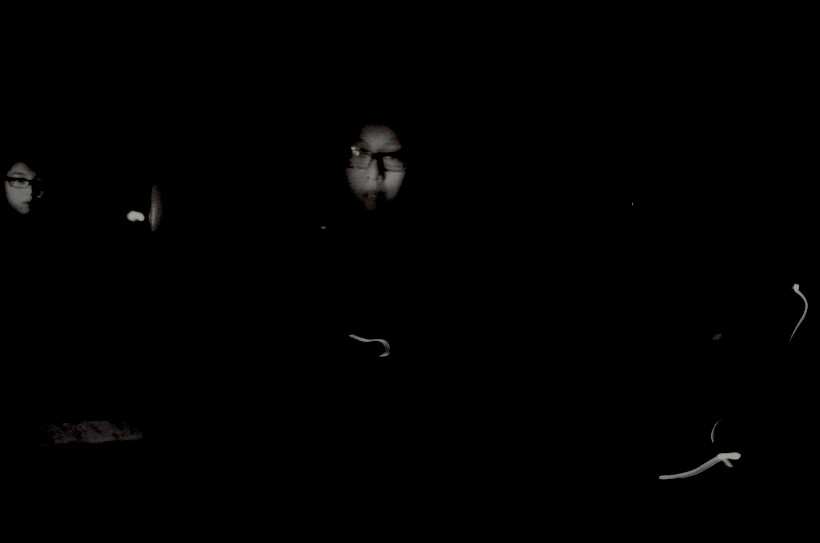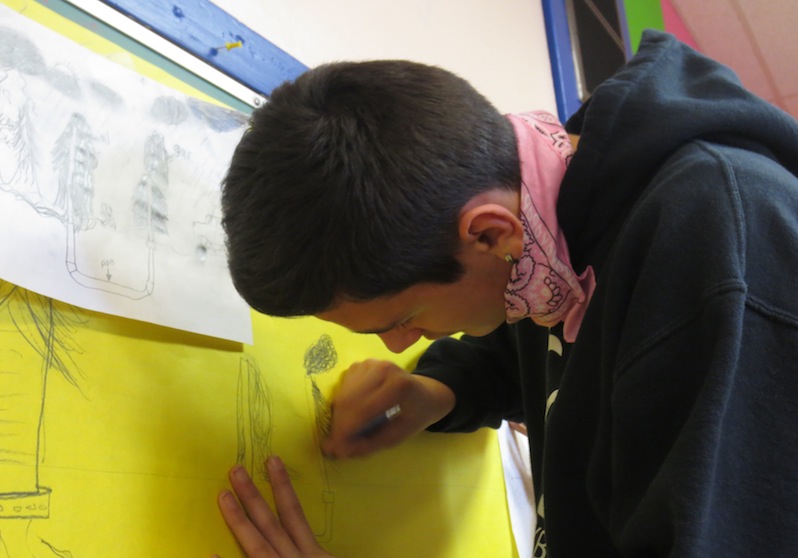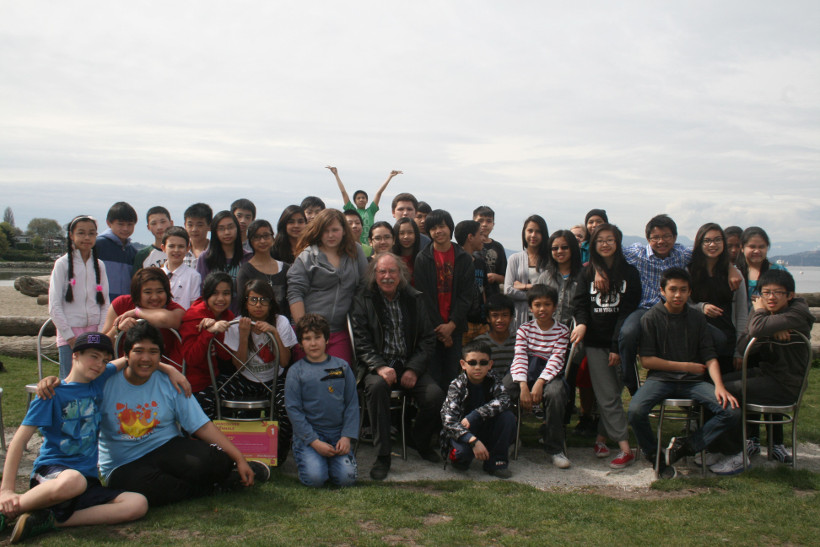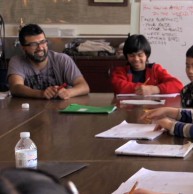Ethics and Society
Science - Grade 9
This unit of inquiry is not a recipe book but rather a launchpad to inspire new BIG IDEAS. We encourage you to use and/or modify one, or several of the BIG IDEAS below. Adapt it to the grade/ ability level of your students.
Enduring Understandings
Ethics shape and are shaped by society
Guiding Questions
How can ethical dilemmas and policies impact global society?
Mind Opening
Choose or devise practices to encourage students to be open to new experiences and ways of thinking in your classroom. For example, the MindUP in-school program.
Discovery and Inspiration:
Launch the Project
• Introduce the Theme: Present the Enduring Understanding and Guiding Questions using vocabulary that is appropriate for your grade level.
• About Vancouver Biennale: Play a short video.
• Create Project Space: Brainstorm ideas to make the project theme visual and visible using bulletin boards, and/or a project corner to share relevant materials and inquiry questions and processes.
Reference Resources:
• Introduction to Sculpture and Public Art Unit Plan for information on how art has evolved over time and the unique experience sculptures and/or public art brings
• Vancouver Biennale 2014-2016 Exhibition Theme: Open Borders / Crossroads Vancouver
• The Dough Portraits (Søren Dahlgaard, Denmark) from Vancouver Biennale 2009 – 2011 Exhibition
Learning to Learn:
Art Inquiry
Project images of The Dough Portraits and Søren’s other works (Søren Dahlgaard, Denmark) and encourage students to explore the art piece at different angles individually and in groups. This Art Inquiry process enables the students to practice observing, describing, interpreting, and sharing visual information and personal experiences. Use the Art Inquiry Worksheet (PDF) to guide and capture their ideas and impressions. Customize or create your own Art Inquiry Worksheet as appropriate for your project and class needs.
Shared Insights
• Sharing Art Inquiry Experience: Ask students to share the Art Inquiry Worksheet responses in class.
• Artist Themes – Research: In small groups students rotate between information stations detailing the artist’s life and work. Station topics include: (1) education and training; (2) lifetime of artwork; (2) materials and processes; (3) beliefs and values. At each station, students answer questions and complete a task. For example, at the station “life’s work” students might plot the artist’s various installations on a map of the world.
• Artist Themes – Anonymity vs Identification: Facilitate a discussion on students’ reactions to The Dough Portraits and Søren’s other works. Are these self-portraits? Not being able to identify the person, how does that affect your response to the atrwork? How might the question or choice of anonymity vs. identification relate to professional ethics and may in turn result in ethical dilemmas and policies in our global society.
• Definition of Ethics: Ask the students to share what ethics mean to them, challenging or agreeing with the definition below.
Reference: Ethics (OED Definition):
1) the rules of conduct recognized in respect to a particular class of human actions or a particular group, culture, etc.
2) that branch of philosophy dealing with values relating to human conduct, with respect to the rightness and wrongness of certain actions and to the goodness and badness of the motives and ends of such actions.
Inquiry Challenges
Research on corporations’ environmental responsibility:
• Movie Trailer – Chasing Ice: Watch Chasing Ice Trailer directed by Jeff Orlowski, is a 2012 documentary film about the efforts of photographer James Balog and his Extreme Ice Survey to publicize the effects of climate change. The documentary includes scenes from a glacier calving event that took place at Jakobshavn Glacier in Greenland, lasting 75 minutes, the longest such event ever captured on film.
Before showing the trailer, ask students what do they think Chasing Ice is about? (Think-Pair-Share) Have a discussion about the showing of the trailer (Think-Pair-Share) and then have a class discussion from the student’s point of view.
• Movie Trailer – The Corporation: Watch The Corporation Trailer and discuss the various ethical/moral topics in the clip (Think-Pair-Share); then, they can think of a mission statement (surrounding the idea to protect the environment) for a corporation of their choice.
Afterwards, research different environmental safety procedures; corporations (of their choice) have conducted or are in the process of conducting. Present findings to the class in any creative form of choice. Guided the investigation based on a given criteria sheet on how they manage their waste disposal and their overall views on their environmental impact or, students can create their own guidelines. It would be suggested that team planning with the teacher-librarian would aid in identifying materials, websites and articles useful in the student research.
• Movie Trailer – Flow: Watch FLOW: The Love of Water: Documentary on corporations that are privatizing water – Launching the Right to Water campaign – Why limit water? How will this affect the rest of the world and us? Would this be environmentally safe?
Other Suggested Documentaries:
Manufactured Landscapes, Wasteland, Tapped
Suggested Graphic Novel:
*Introducing Ethics, Dave Robinson, and Chris Garret, Icon Books, UK 1996
Student Creations
Students and teachers decide on medium and methods to communicate their insights on their chosen corporation and their environmental policies. Consider use of posters, websites, montages, written essays/poems, film and audio, dance, visual arts or theatre.
Taking Actions
Students can decide on individual or group projects to promote their learning to the broader community for long-term influence. The focus being students as learners and communicators, to engage with an audience to get feedback, and ideally, the action is propelled even further. Students can present their findings not only to their peers but also to grade 6-7 classes at a local elementary school. Students can prepare a few fun and interactive activities for the grade 6-7 classes. Emphasize the idea of passing on knowledge and learning to younger generations and to spread this throughout the community.
Reflection
• Teacher and students can reflect on their entire learning process by revisiting the Enduring Understanding and relevant Guiding Questions.
• How did the unit of study open inquiry, create cross–curricular learning opportunities and/or apply learning to real life situations? Has this unit of inquiry changed your opinions, values and world view? In what ways, if any, has it helped you grow as a learner?
Ideas for Cross-Curricular Access
• Language Arts – He-y Come On Ou-t! by Shinichi Hoshi: A 1978 science fiction short story of social criticism with an ecological message, ask students to comment on its relevance today.
• Mathematics – Statistics and Probability: Measure differences in water level over history or effects of oil/nuclear/mining disasters etc.
Ask students to research and then graph information. Extrapolate how long it will take to submerge Vancouver? Engage the teacher-librarian in guiding the research. Look at measuring the effects caused and the corporations’ actions/responsibilities.
• Social Studies – Politics and Law: What is the evolution of law and ethics in Canada?
Have students inquire into how and why laws are created by the Canadian government and whether ethics are considered? Do laws impact Canadian society? Are there laws to protect the environment? If there are, how do you think they’re developed? What could influence these kinds of laws? Study the current pipeline debate and look at the arguments from both sides. What ethics or breach of ethics do the students see? Study a local environmental group looking at its policies and ethical standards.
Credits
Written by: Dominic Lee, Stephanie Moreno and Natasha Randhawa, 2013 UBC Secondary School Teacher Candidates
Edited by: Jennifer Massoud, Secondary School Teacher
©2013 Vancouver Biennale



